History of Medicine Tour
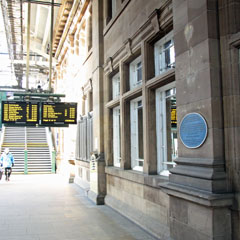 |
1. Edinburgh Physic Garden On this site stood the hall of the Royal Medical Society between 1852 and 1966. Read more… |
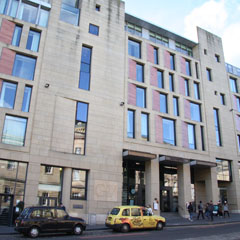 |
2. Royal Medical Society of Edinburgh plaque On this building you will find a plaque dedicated to Sir Godfrey Thomson, a pioneer of research into human intelligence. Read more… |
 |
3. College Dispensary In 1682 the Royal College of Physicians of Edinburgh decided to establish a Dispensary to provide medical services to the poor in Fountain Close. Read more… |
 |
4. Robert Knox’s Anatomy School At number 10 Surgeon’s Square Robert Knox ran his extra-mural anatomy school from the death of its original proprietor, John Barclay, in 1826 until 1844. Read more… |
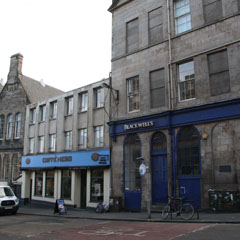 |
5. Site of the old Royal Infirmary Edinburgh Royal Infirmary moved to this site in 1741. Read more… |
 |
6. Site of William Gregory’s laboratory William Gregory, the discoverer of morphine, was professor of chemistry at the University of Edinburgh from 1844 till his death in 1858. Read more… |
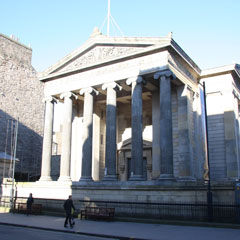 |
7. The Edinburgh Seven A notorious riot took place on this spot at the doors of the Royal College of Surgeons in 1870 when male medical students attempted to prevent female students from taking an anatomy class. Read more… |
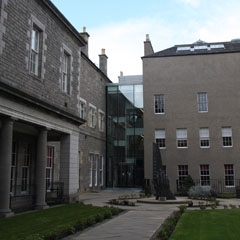 |
8. Surgeons’ Hall Museums The Royal College of Surgeons of Edinburgh was founded in 1505. Read more… |
 |
9. Site of James Barry’s student lodgings In 1812, long before women could enrol at Edinburgh’s medical school, a woman born under the name Margaret Ann Bulkley (c.1799–1865) successfully graduated with an MD from the University of Edinburgh. Read more… |
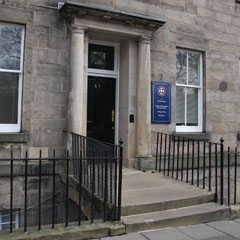 |
10. House of Dawson Fyers Duckworth Turner Dawson Fryer Duckworth Turner was a physician who had worked at a number of Edinburgh hospitals. Read more… |
 |
11. Phrenological Museum Until 1886 this was the site of Edinburgh’s phrenological museum, founded by the president of the Edinburgh Phrenological Society, George Combes. Read more… |
 |
12. Edinburgh School of Medicine for Women In 1886, six years before the first women were admitted to study medicine at the Scottish Universities, Sophia Jex-Blake set up the Edinburgh School of Medicine for Women in Chambers Street. Read more… |
 |
13. Ultrasound Scanner, National Museum of Scotland Today, ultrasound scanners are a vital diagnostic tool found in hospitals all over the world. Read more… |
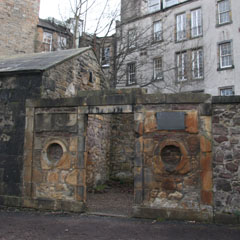 |
14. Grave of Sir Robert Sibbald Sir James Sibbald was a graduate of the University of Leiden, then the foremost centre for medical education in Europe. Read more… |
 |
15. Polish Medical School plaque The Polish Medical School at the University of Edinburgh was set up in March 1941 to allow members of the Polish armed forces in Britain to study medicine in their own language and according to a Polish curriculum. Read more… |
 |
16. The old Royal Infirmary, Lauriston Place Designed by architect David Bryce, the Royal Infirmary at Lauriston Place was a state-of-the-art hospital when it was opened in 1879. Read more… |
 |
17. Site of Norman Dott’s motorcycle accident The celebrated surgeon Norman Dott (1897–1973) was originally destined for a career as an engineer and was apprenticed to a local engineering firm. Read more… |
 |
18. St Bernard’s Well This natural spring beside the Water of Leith was discovered in 1760 and rapidly became popular with citizens of Edinburgh suffering from a variety of medical conditions. Read more… |
 |
19. The Botanic Cottage, Royal Botanic Garden Edinburgh This cottage, which had been lovingly rebuilt in the current Royal Botanic Garden in Inverleith, stood for 60 years at the old site of the Botanic Gardens near Leith Walk. Read more… |
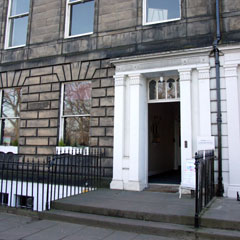 |
20. House of James Young Simpson In this house on 4 November 1847 James Young Simpson, professor of medicine and midwifery at Edinburgh University, discovered the effects of chloroform, the first widely used anaesthetic. Read more… |
 |
21. Royal College of Physicians of Edinburgh The Royal College of Physicians of Edinburgh was established by Royal Charter in 1681. Read more… |
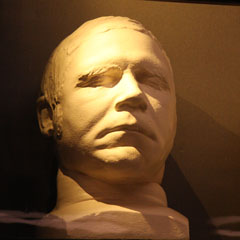 |
22. William Burke death mask, National Portrait Gallery The advocates of the ‘science’ of phrenology claimed that the brain was composed of a number of organs, including organs of ‘destructiveness’ or ‘benevolence’ and ‘hope’. Read more… |
